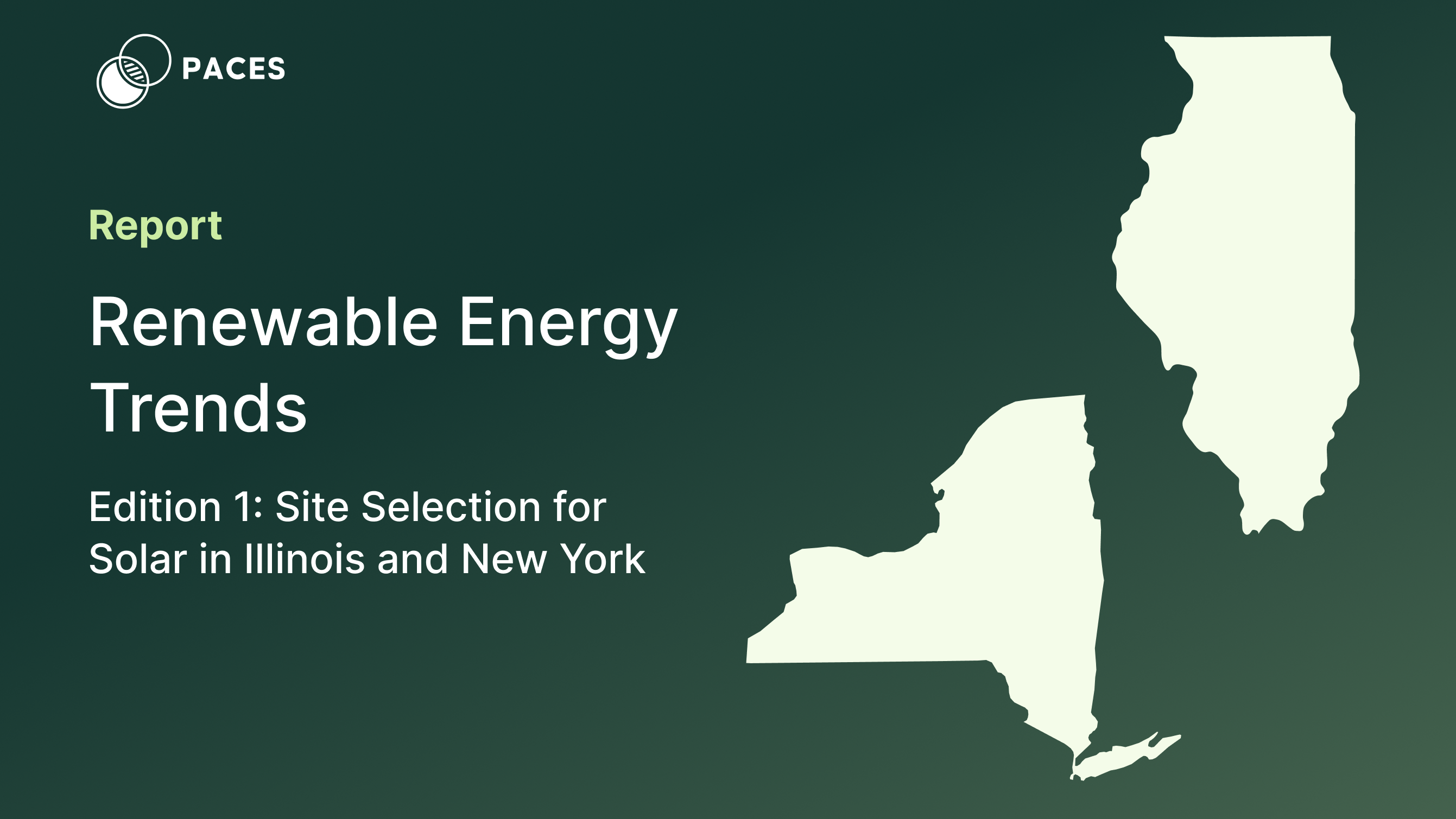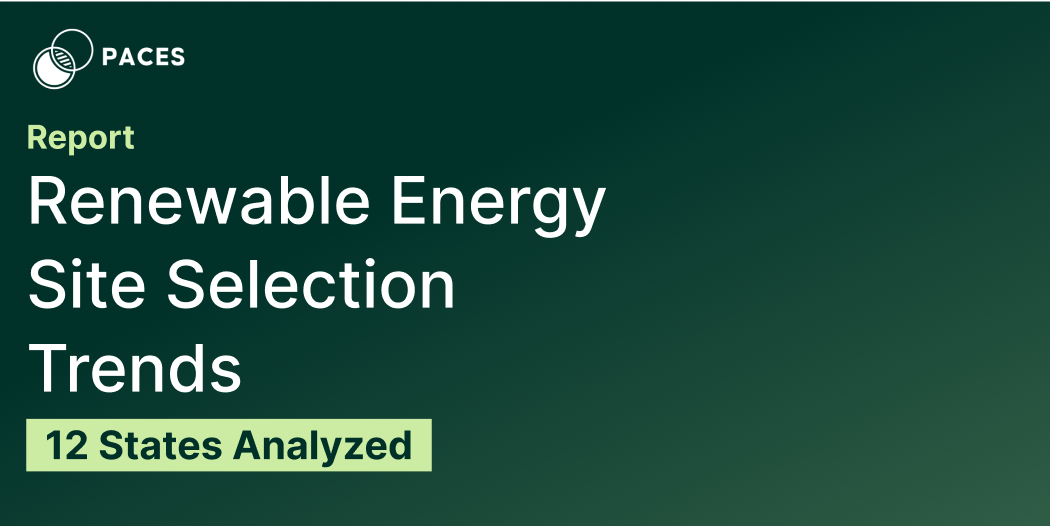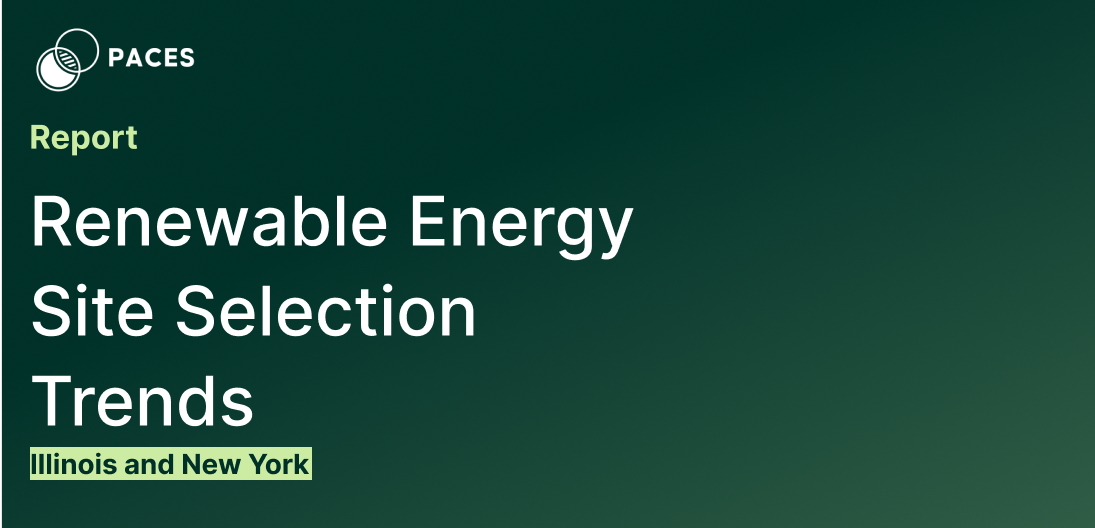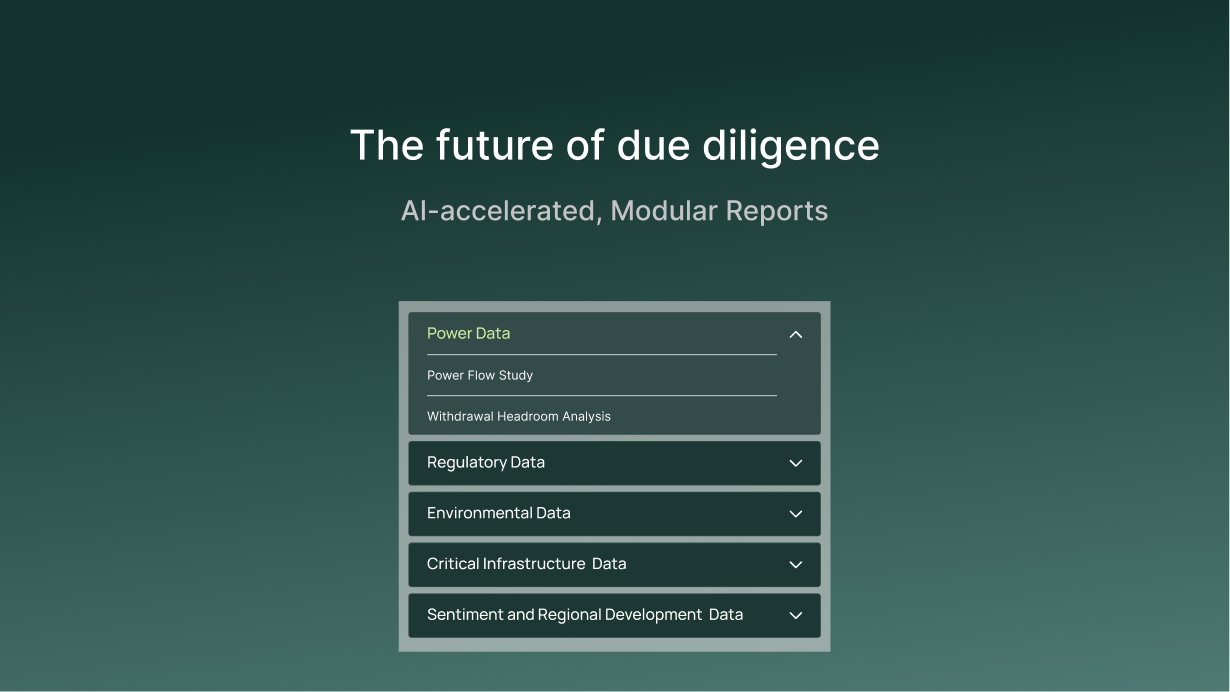
Renewable Energy Trends, Edition 1: Site Selection for Solar
Introduction
As renewable energy development accelerates, securing optimal sites for solar and wind projects is increasingly challenging. New data from key U.S. markets reveals a troubling trend: as the competition for available land intensifies, the number of suitable land parcels for renewable energy projects is rapidly shrinking, and developers who delay risk being left with fewer, less desirable options.
This report analyzes the decline in viable sites in Illinois and New York, exploring how these trends could significantly impact the future of renewable energy development.
Methodology
We evaluated land suitability trends in Illinois and New York - two key U.S. markets for solar projects. Our data analysis focused on:
- Number of suitable sites: Defined as parcels with +1 MW of feeder capacity and +15 buildable acres.
- Average site size (acres)
- Available feeder capacity
The data spans January 2024 through October 2024, with projections extending through June 2025. These metrics provide a clear view of past trends, future site availability in these markets, and the impact on renewable energy project feasibility.
Key Findings
The analysis of data from two key U.S. markets, Illinois and New York, reveals a clear and troubling trend: the availability of suitable sites for renewable energy development is rapidly decreasing. In addition to the shrinking number of parcels, site sizes and available feeder capacity are also declining, signaling a more competitive and constrained environment for developers. Below, we break down these trends and highlight the most critical metrics that emphasize the urgency of timely action in site selection.
Decreasing Availability of Suitable Sites for Renewable Energy Development
Across both Illinois and New York, the analysis reveals a rapid decline in the number of suitable sites for renewable energy development:
.png)
- Illinois: The number of suitable sites decreased from 13,302 in January 2024 to 7,735 by October 2024, a staggering 41.9% reduction.
- New York: The number of available sites dropped from 6,908 in January 2024 to 6,245 by October 2024, a 9.6% reduction.
Smaller Sites Are Complicating Solar Energy Projects
In addition to fewer suitable sites, the average acreage of available land is shrinking, forcing developers to scale down their projects or piece together multiple smaller parcels:
.png)
- Illinois: The average site size fell from 51.0 acres in January 2024 to 45.2 acres by October 2024, an 11.37% decline.
- New York: The average acreage decreased from 41.0 acres in January 2024 to 39.0 acres by October 2024, a 4.88% reduction.
Feeder Capacity Declines are Adding Complexity
The availability of feeder capacity - essential for the energy output of renewable energy sites - is also shrinking, further complicating site selection:
.png)
- Illinois: Average feeder capacity declined from 3.03 MWs per site in January 2024 to 2.97 MWs by October 2024.
- New York: Average feeder capacity dropped from 3.54 MWs in January 2024 to 3.33 MWs by October 2024.
This reduction limits potential energy output and complicates the site selection process, increasing costs and delaying timelines.
Projections Show Further Decline by Mid-2025
Looking ahead, both markets are expected to see additional reductions in site availability and feeder capacity:
.png)
- Illinois: The number of suitable sites is projected to drop to 5,981, with the average site size shrinking to 41.2 acres and feeder capacity falling to 2.8 MW per site.
- New York: Projections show the number of sites declining to 5,372, with feeder capacity dropping to 3.2 MW per site.
Below is an overview of the above graphs:
Illinois (IL)
- Jan 2024: 13,302 sites with an average of 51.0 acres and 3.03 MWs available per feeder.
- Jun 2024: 12,645 sites, reflecting a 5% drop from January.
- Oct 2024: The number of sites declined to 7,735, a 41.9% loss in available parcels compared to January.
- Projected June 2025: Only 5,981 sites are estimated to be available, with average acreage dropping to 41.2 acres and 2.80 MWs per feeder.
New York (NY)
- Jan 2024: 6,908 sites with an average of 41.0 acres and 3.54 MWs available per feeder.
- Jun 2024: 6,733 sites, a 2.5% drop from January.
- Oct 2024: The number of sites decreased to 6,245, a 9.6% reduction in available parcels compared to January.
- Projected June 2025: Only 5,372 sites are estimated to be available, with average acreage dropping to 37.6 acres and 3.2 MWs per feeder.
Opportunities in Key Jurisdictions
.png)
Despite the shrinking pool of suitable sites, opportunities still exist within certain jurisdictions.
- Illinois: As of October 2024, 174 administrative jurisdictions (AHJs) had more than ten suitable sites.
- New York: As of October 2024, 207 AHJs had more than ten suitable sites.
Developers should prioritize securing land in these regulatory-friendly jurisdictions while favorable options remain.
Fragmentation of Land Ownership: A Growing Challenge
The high number of unique landowners with suitable sites adds another layer of complexity for developers.
.png)
- Illinois: Over 5,360 unique landowners hold suitable parcels.
- New York: There are 4,886 unique landowners with suitable parcels.
Coordinating with thousands of individual landowners to secure parcels increases the time and resources needed for land acquisition.
How This Will Impact Renewable Energy Development – and How to Overcome It
The shrinking availability of suitable sites poses a significant challenge for renewable energy developers. As land availability becomes scarce, competition for optimal locations will increase, which can lead to higher costs and longer development timelines. Fewer suitable sites could also result in bottlenecks in the permitting process, especially in jurisdictions with more complex regulations.
However, this challenge presents an opportunity for those equipped with the right tools and data. By using platforms like Paces, developers can:
- Identify optimal sites: Paces’ site selection tool provides real-time, data-driven insights to help developers find the most viable parcels.
- Streamline permitting processes: Early risk assessment with Paces’ comprehensive permitting data allows developers to avoid costly delays and de-risk project timelines.
- Efficiently reach landowners at scale: Paces simplifies outreach and negotiations with landowners, saving time and resources in a competitive market.
- Stay ahead of the competition: Developers with AI-powered data and analytics can make quicker, more informed decisions, securing prime sites before they are claimed by competitors.
While the trend of fewer available sites is clear, it does not signal the end of renewable energy development opportunities. The key is to act now—by leveraging advanced tools, developers can turn these challenges into a strategic advantage, accelerating their projects and contributing to the renewable energy transition.
Sign up for emails
Find the right sites faster, assess feasibility with world class data, and track progress across your entire project pipeline with software built to compress your workflow.







